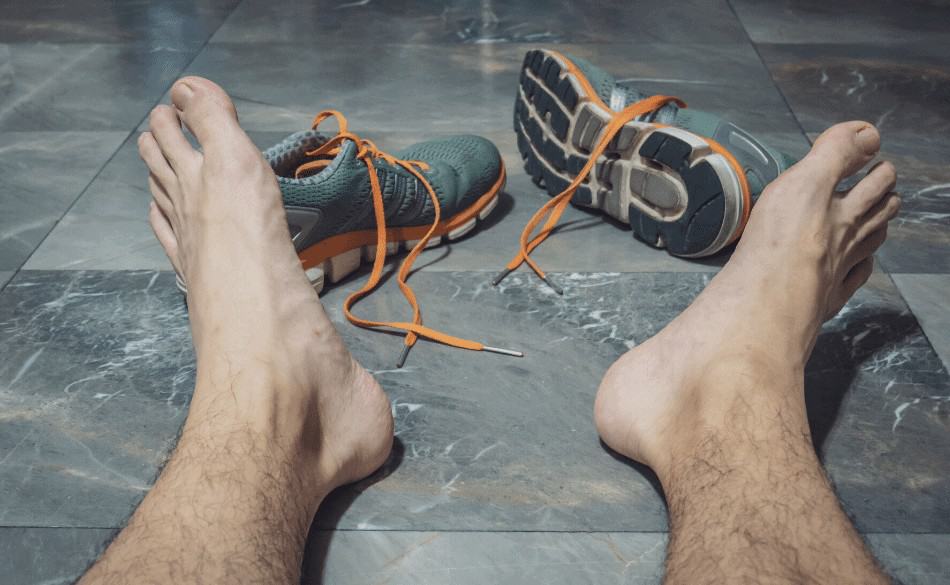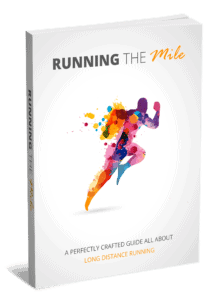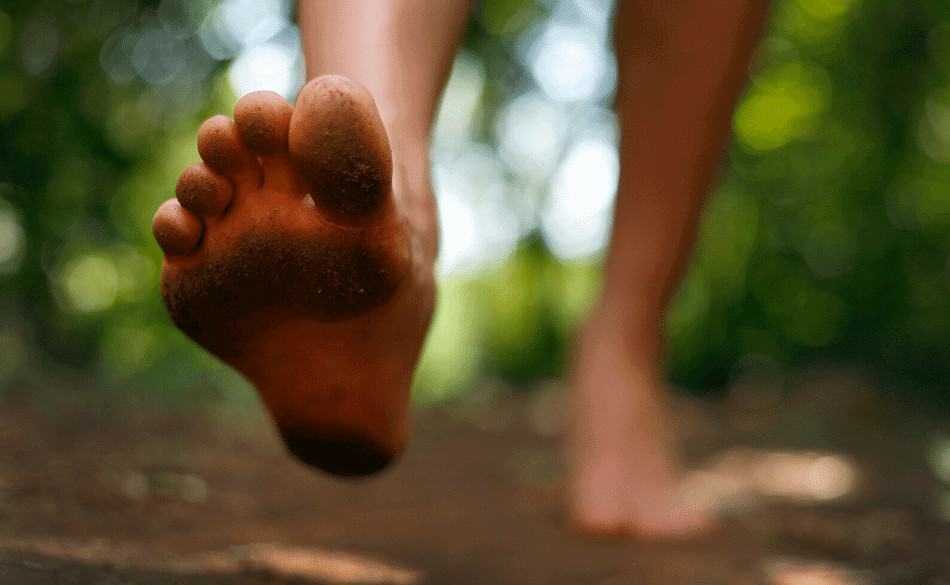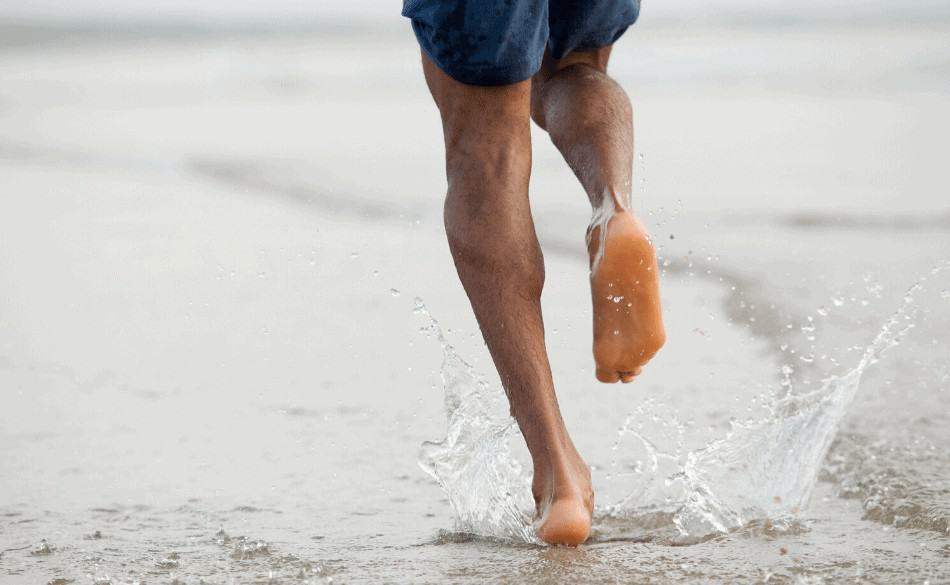
Barefoot Running Guide – Learning Barefoot Technique And How It Can Benefit You
Page Contents
Barefoot running is attracting significant attention from sports scientists, professional athletes, and casual runners alike. Those who have discarded conventional running shoes to go barefoot or with minimal footwear, claim to have fewer running-related injuries as a result.
Advocates have tangible scientific evidence to support their theory that overly cushioned running shoes likely cause more harm than good. The dramatic rise in running-related injuries since modern running shoes came onto the scene is compelling more runners to consider running barefoot.
Cushioned Running Trainers – What Is The Problem?
Modern running shoes with their ultra-cushioned soles are designed to protect running feet from pounding foot strikes. But according to advocates such as David Sypniewski, cushioned heels are a critically dangerous design. They cause a runner’s feet to strike the ground harder than nature intended.
Barefoot running, or running with minimal footwear, encourages runners to land on the mid-point of their sole rather than the heel. The force exerted on the heel of a shoe is equal to three times a runner’s body weight. When a runner strikes the ground heel first, the body effectively comes to a dead-stop. Thus dispersing the energy of the foot strike upwards to ankles, knees, and hips. This is likely the cause of many injuries.
This theory has been scientifically researched by Harvard professor of human evolutionary biology, Daniel Lieberman. His field of research examines various issues related to human locomotion. In particular, when, how, and why humans became so adept at long-distance running.
Lieberman observes that humans have been running in bare feet, or in simple shoes for millions of years. By observing how barefoot runners tend not to land on their heels first. His results have concluded that humans are better off running without shoes.
The Proponents Of Barefoot Running
There are several prominent advocates of running barefoot. Timothy Ferriss, the author of the bestselling 4-Hour Workweek (Crown Publishing Group) is one of them. He is enthusiastic about low-impact running and encourages people to try out Vibrams Five Fingers. “After two weeks of wearing them, the lower-back pain I’d had for more than 10 years disappeared and hasn’t returned since I started experimentation with them,” he comments.
The author who arguably put barefoot on the map is Christopher McDougall. His book Born to Run (Knopf) explores the life and running habits of the Tarahumara Indians of Mexico’s Copper Canyon. They can run hundreds of miles across unforgiving terrain without cushioned running shoes.
This tribe, who are arguably the greatest distance runners in the world, taught McDougall how to master their running style. he learned to run with smaller and quicker strides. Meaning he landed lighter and more gently on the balls of his feet. “The foot is the greatest disciplinarian,” he says. “You can’t over-pronate, can’t over-train, can’t over-stride”. “If you do anything wrong, the foot will tell you”.
Another advocate of running without shoes is Ted McDonald. He has also spent time running with Mexico’s Tarahumara Indians and features in McDougall’s Born to Run book. McDonald has played a significant role in defining and popularizing barefoot running and minimal footwear. Especially the custom-made leather-soled Huarache running sandals, that were inspired by the Tarahumara.
His philosophy is that human feet have evolved to feel the impact of whatever terrain runners are traversing. By feeling the impact, runners can adjust their stride and foot strikes accordingly and avoid injury. Minimal footwear still enables runners to feel the impact but offers foot protection in more arduous conditions where temperature and terrain are not ideal for bare feet.
Difference Between Barefoot Shoe And Running Shoes
When running barefoot, the runner lands lightly on the ball of the foot. Running shoes tend to push runners to land on the midfoot or even the heel, depending on their stride. One study from the International Journal of Sports Medicine found decreased running efficiency in 12 test subjects when they ran with shoes. This resulted in decreased stride frequency and leg stiffness while running. A 2015 study showed running in bare feet decreased foot impact which is what running shoes are supposed to do. Because of these mechanical changes, running with shoes may increase the risk of these common running injuries:
– Ankle sprain
– Plantar fasciitis
– Shin splints
– Ilio-tibial (IT) band syndrome
– Patellofemoral syndrome
Barefoot enthusiasts usually recommend shoeless running to everyone. However, podiatrist Dr. Michael Nirenberg says not everyone should run barefoot. He suggests only experienced runners with relatively normal feet should attempt it. Those athletes with high arches or flat feet might want to keep their shoes on.
One population of runners that should avoid it are patients with diabetes and should wear shoes when running. Peripheral neuropathy is a common complication of diabetes and results in the feet losing appropriate sensation.
Learning Barefoot Technique – How Hard Is It?
Barefoot runners recommend starting slow. Runners used to wearing shoes all the time should start simply with walking. Runners can work up slowly to running without shoes or with minimalist shoes. Starting 15 to 20 minutes at a time and increasing the time as tolerated. Runners should expect some stiffness as the feet adapt to the new gait. It is recommend trying several different types of running surfaces to allow the feet to adjust to a various types of terrain.
Athletes wanting to try running barefooted but concerned about stepping on an errant piece of glass or stone can try a pair of minimalist running shoes. Available models include:
– Vibram Five Fingers
– Nike Free
– Terra Plana Vivo
A small study in the Journal of Sports Medicine and Physical Fitness supported the Vibram Five Fingers claim to being close to barefoot running in terms of foot biomechanics. Although runners should check with their podiatrist before beginning a long distance training program.
Benefits Of Running Barefoot – What Are They?
Experts say shoe runners can transition to barefoot within three weeks. People who walk and run in bare feet claim the benefits are almost immediate. Other than human biology, other benefits of going this way include:
– Stronger foot muscles
– No injuries
– Increased sensory perception
– Easier and faster running technique.
It may seem like a new fad, but the research of human evolutionary biologists proves otherwise – barefoot is the way humans have always run, until very recently. The advanced and often very expensive running shoes worn by most runners are designed to reduce impact, but because they result in harder heel strikes, shoe runners are prone to injury. Running barefoot, or running with minimalist footwear, seems to be the way of the future, not just the past.


Download Running the Mile for only 8usd
“A Know-all Short Report All About Long Distance Running”





